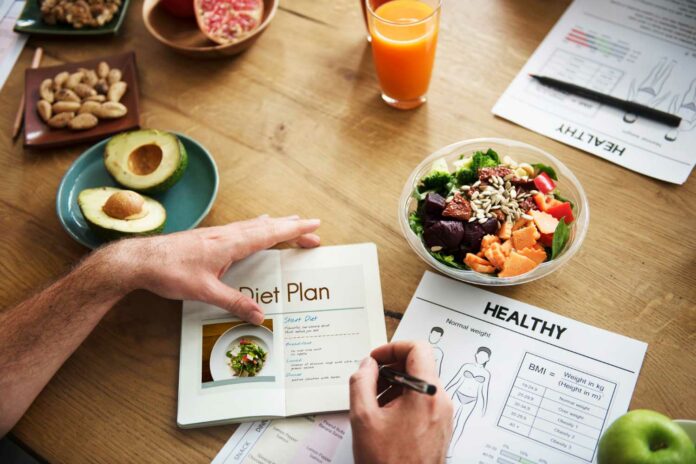People argue about how much salt we should eat because everyone’s blood pressure reacts differently to salt. Also, we don’t know much about how salt affects the blood pressure of those who take medicine for high blood pressure.
A recent study, supported by the National Institutes of Health, looked into how people’s blood pressure responds to changes in their salt intake. They discovered that most adults who greatly reduced their salt intake, reaching around 500 mg a day (a 75% reduction), experienced a significant drop in systolic blood pressure, about 6-8 mm Hg, in just one week.
Norrina Allen, Ph.D., M.P.H., a senior author on the study and a professor of health policy, epidemiology, and pediatrics at Northwestern University’s Feinberg School of Medicine said, “It’s a dramatic effect. That’s about the effect you would see starting medication.”
“The effects from this single diet change were seen across participants with varying blood pressure levels: normal, elevated, and high but controlled with medication.”
Reducing salt intake significantly can be challenging, especially considering that most Americans consume more than the recommended daily limit of 2,300 mg. A gradual approach is suggested, starting with consuming less than 2,300 mg daily and then progressively aiming for lower amounts, such as 2,000, 1,500, or 1,000 mg.
Research indicates that adults who restricted their salt intake to approximately 1,150 mg daily achieved blood pressure reductions similar to the study’s findings but over a more extended period of 30 days.
The key to success?
Fresh is best: “Eat fresh” emphasizes consuming more fresh fruits and vegetables while reducing heavily processed or prepackaged foods. A helpful approach is to limit the intake of the “salty six,” identified by the American Heart Association as a significant source of high-sodium foods.
Additionally, it’s crucial to be mindful of hidden sodium in seemingly healthy options, such as prepackaged salad dressings. Creating homemade alternatives using ingredients like olive oil, lemon, balsamic vinegar, and a touch of honey or sugar can be a healthier choice.
The study participants embraced a diet rich in fresh fruits and vegetables, complemented by sodium-free or reduced-sodium versions of common items like bread, chips, soup, and dinner entrées. A typical day’s menu included low-sodium oatmeal with Greek yogurt and grapes for breakfast (48 mg of sodium), a lunch choice between a salad, reduced-sodium lentil soup, or a sandwich with sodium-free bread paired with fresh fruit or vegetables (50–91 mg of sodium), and dinner featuring low-sodium vegetables and brown rice, vegetable lasagna, or a bean burrito, along with a banana, orange, and milk (340–400 mg of sodium).
Altogether, participants consumed around 2,300 calories a day, which, in addition to the 500 mg of sodium, included 4,500 mg of potassium and 1,000 mg of calcium.
Allen said, “Even if you can’t get to 500 mg of sodium a day if you cut out different sources of salt to reduce your daily average, that’s going to have a benefit. People should read food labels and compare sodium across different items and brands. It’s a little investment of time and energy up font, but it pays off in the long run.”
“There are also tricks to reading food labels. ‘No salt added’ or ‘unsalted’ doesn’t mean a food is sodium-free, but labels that state ‘sodium free’ or ‘salt free’ often contain less than 5 mg of sodium per serving. Other variations fall between ‘very low sodium,’ ‘low sodium,’ and ‘reduced or less sodium. Note that something labeled reduced or less sodium means it contains less sodium than the product’s prior formulation.”
To adopt a lower-sodium diet, individuals can customize their meals based on their usual food choices or draw inspiration from the Dietary Approaches to Stop Hypertension (DASH) eating plan, which promotes heart health.
A DASH-inspired breakfast could include shredded wheat cereal with fresh fruit and low-fat milk or a low-sodium corn tortilla with beans, vegetables, and mango, paired with orange juice and coffee. Lunch and dinner options might revolve around a fresh salad with homemade vinaigrette, baked fish and vegetables, or an Asian-inspired vegetable stir-fry.
When planning heart-healthy meals, it’s important to ensure adequate vitamin D intake, especially during periods of reduced sun exposure, such as in winter. Additionally, paying attention to iron intake is crucial, particularly for women and children. It’s advisable to limit the consumption of saturated fats, alcoholic beverages, and added sugars present in sugar-sweetened beverages and other foods.
As a bonus, people should regularly check their blood pressure. Just like weight, fluctuations in blood pressure are normal so checking it weekly, bi-weekly, or monthly can help keep tabs on progress.
Scientists noted, “It typically takes a few months for lifestyle changes like these to become routine. This is why she recommends people set goals that are specific, measurable, attainable, realistic, and time-bound, or SMART.”
Journal Reference:
- Deepak K. Gupta, Cora E. Lewis et al. Effect of Dietary Sodium on Blood Pressure: A Crossover Trial. Journal of the American Heart Association. DOI: 10.1001/jama.2023.23651
